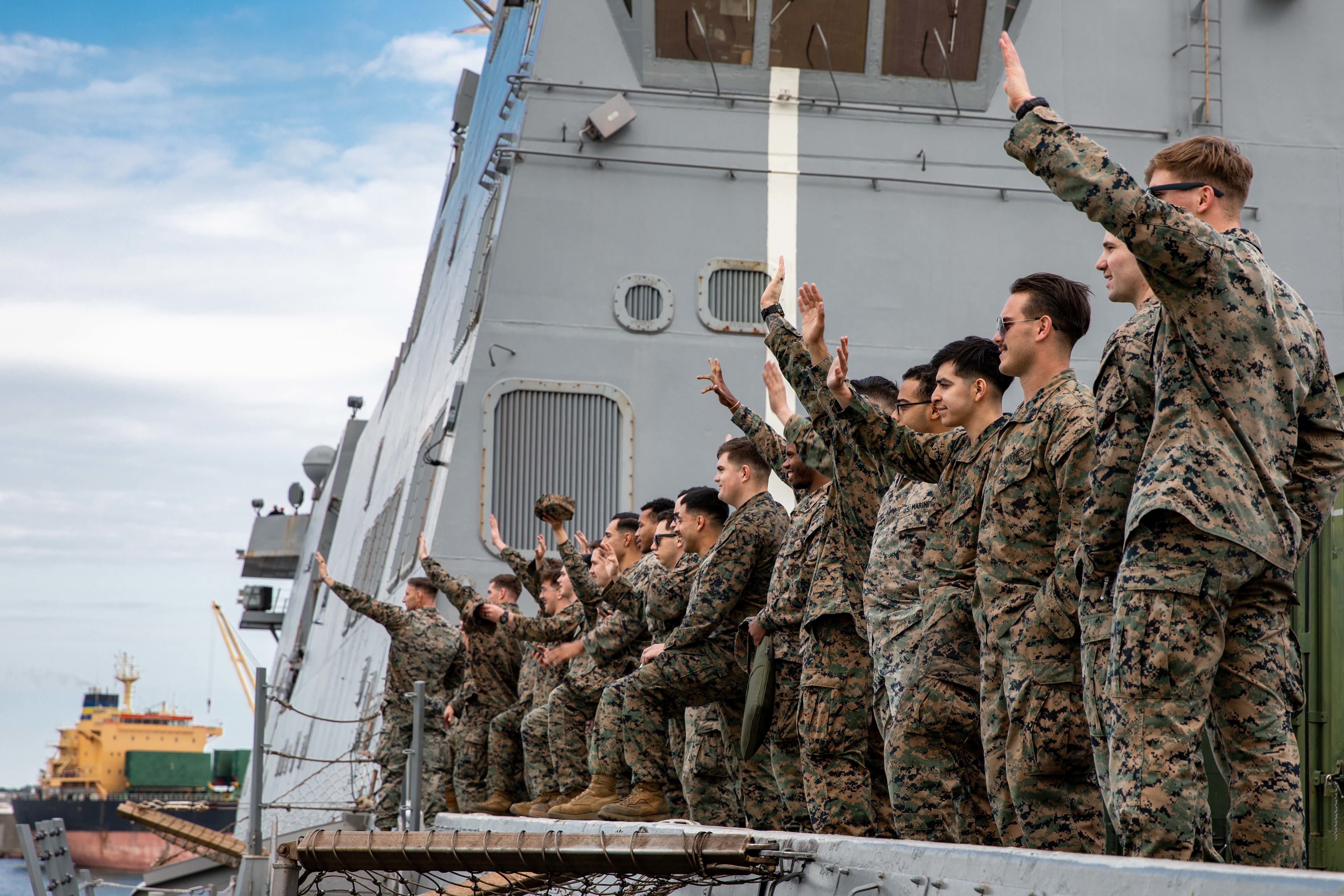
WASHINGTON, D.C. — The commandant of the Marine Corps will have a direct say in both the requirements for the Navy’s amphibious ships and the force structure, according to provisions in the Fiscal Year 2023 National Defense Authorization Act.
One provision in the bill mandates the Marine Corps’ top officer decide the requirements for amphibious ships, while another requires the Navy talk with the Commandant regarding crucial matters pertaining to the amphib force.
“It clearly states from Congress that the role of the commandant of the Marine Corps in defining requirements. That’s a very positive thing. It doesn’t say anything negative about a personal relationship between the [chief of naval operations] and the commandant or the two services are bickering with each other,” Marine Corps Commandant Gen. David Berger told reporters today of the legislation.
“It just says Congress understands that that’s a service requirement so we want to hear from the service what you need. I think that’s not complicated at all. I’m comfortable with the way things are moving forward,” he added, noting the appropriators still have not released their final spending bill.
Asked what the legislation would enable him to do now that he couldn’t do before, Berger said it will allow officials to move past the requirements piece.

“We can stop talking about what the requirement is year to year to year and talk more about what we can afford and how to use it and how to maintain it. Because the CNO wants to keep the LPD line hot also. You all know the reasons. We’re in 100 percent agreement there. What it does is stop talking about 31 or 35 or 38 – we know what the minimum is,” he said during a Defense Writers Group breakfast on Wednesday.
“Now let’s talk about what we can afford.”
The conference legislation, released late Tuesday, also sets a floor for the Navy to have a minimum of 31 amphibious ships.
The various provisions come after a budget cycle in which the Navy and Marine Corps appeared to diverge on amphibious warships. The Navy’s FY 2023 budget proposal earlier this year said it would end the LPD-17 Flight II line with the purchase of LPD-32. But Berger placed advanced procurement for LPD-33 at the top of his annual wishlist that followed the budget submission.
The original Navy proposal also sought to retire four Whidbey Island-class dock landing ships, but the conference bill prevents the service from decommissioning the ships.
Asked about the proposed decommissioning of the amphibious ships on Wednesday, Berger said Chief of Naval Operations Adm. Mike Gilday has the best understanding of how much it costs the service to maintain the older amphibs.
“We need to make sure the inventory of amphibious ships, combatant ships, is adequate to do what the president and the secretary need us to do based on the National Defense Strategy. It’s not any more complicated than that. But inventory is more than how many. It’s how many that are working, that are usable. So we can have 100 of something, but if only 20 of them are usable, then 100’s not a relevant number. It’s the 20,” Berger said.
“From our perspective, we have to focus on both – the inventory of amphibious ships and the readiness, availability of those ships. The CNO’s pretty open about it,” he continued. “He’s not very happy with the maintenance part of fixing them and getting them out on time, and then they get underway and break again. He’s not very happy with all of that – making progress, but he wants to hold them accountable. Me too.”

Berger also cited industrial base capacity as a limitation for how many amphibious ships the yards can build, an argument Gilday has made in recent months about shipbuilding overall.
“I think the department of defense leadership – civilian and uniform – is a lot more aware of, even if we’re not smart enough on, the industrial base than we were five years ago. I don’t think we’re cavalier about it,” Berger said.
“It wasn’t as big of a focus as it is right now. Now, industrial capacity, diversity – this is a discussion like every week and it never was before. Now it is. When you only have so many factories, so many shipbuilding companies – the mergers that took place over time down to get to three or four and there’s not much competition – all this is like now an every week topic of conversation.”
Labor, Berger said, “is one of the main limiting factors,” for amphibious ship production.

“I think if the CNO had his druthers, he would double the number of shipyards tomorrow because we need capacity and we need competition and we need both to get the citizens a good price on the ships, right, and quality,” the commandant said.
HII’s Ingalls Shipbuilding, which builds both the San Antonio-class amphibious transport docks and the America-class amphibious assault ships, is currently building three LPDs and one LHA at its yard in Pascagoula, Miss. The shipyard in October won a $2.4 billion contract to build another LHA – LHA-9 – and in June won a $240 million contract to buy long lead material for a fourth LPD.





